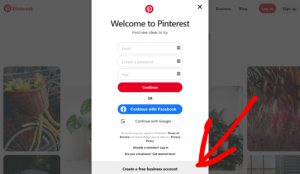
Is your paid media driving sales? It should be. Increase your ROI from paid advertising with strong and relevant ad copy that generates engagement.
By offering valuable and effective copy in ads, you can develop clarity and compel users to take action.
Leveraging the tips below can help construct campaigns that resonate with users and boost conversion rates.
1. Align Marketing Goals Across Channels
Let your ads be a reflection of your marketing goals that span across all your digital assets. To be effective, your ad copy should assist your marketing efforts in growing a fan base, increasing exposure, or driving sales with clear messaging. Be transparent with your goals and let your ad copy reflect the benefits and value of the action you are asking users to take.
2. Tailor Ad Copy To Audience Targeting
Every strong campaign focuses around a deep understanding of audience behavior, interest and expectation. By understanding the needs of unique audience segments, marketers can develop more defined targeting parameters and ad copy that resonates with users.
When creating ad copy, define your goals for each segment and develop ad copy around each segment’s unique attraction to the benefits offered by your business.
3. Split Test Ad Copy
Determining the optimal copy for ads requires extensive testing within campaign segments. When crafting your ad copy, create multiple versions that experiment with different tone, wording and focus.
Launch campaigns with matching targeting to see which ad copy generates the most engagement. Different segments may respond best to different copy, so test both within matching audience segments and across all campaigns.
4. Use Keywords In Ad Copy
Increase the relevancy and exposure of your ads by discovering how your audience segments search. Once you have identified the keywords and phrases that your users are searching for, integrate them into your ad copy.
Try to naturally integrate your keywords into content in a delivery that is easy for users to read. Including keywords will increase relevancy and ad rankings by offering a higher quality score. Quality scores are evaluated by monitoring ad engagement, keyword relevancy and landing page quality to deliver a better user experience with valuable content.
5. Use Dynamic Keyword Insertion
Dynamic keyword insertion is an advanced AdWords feature that updates your ad text to include the keywords that match a user’s search terms. This distinctive feature helps increase the value of your ads and drive more engagement through a more personalized user experience. To use this feature in your ads, insert a code into your ad text such as ‘Keyword: Marketing’.
This allows your ads to show unique copy to users with the keywords that initially triggered your ad in search. In the situation that a keyword cannot be inserted, the word following the colon (in this case “Marketing”) will be included in the ad.
6. Clear Calls To Action
The time viewers will be exposed to your ad is limited, so deliver your message in a concise and easy to read format that compels users to tack action. Deliver your benefits and provide a strong call to action that offers value and generates clicks. Echo your calls to action in your destination pages and develop customized landing pages for campaigns with unique calls to action.
Conclusion
Developing effective ad copy and paid media campaigns begin and end with users in mind. By understanding how users search and their expectations from your brand, marketers can create more valuable content that drives sales. Leverage data to ensure your targeting, calls to action, strategy and overall marketing goals are in line and optimized within your campaigns to drive success.
(201)




